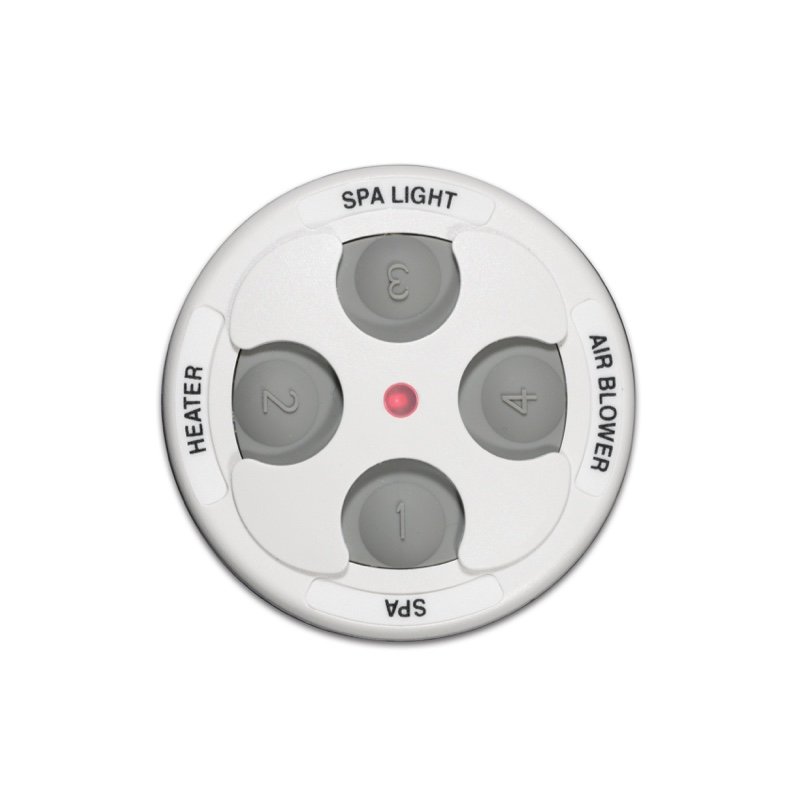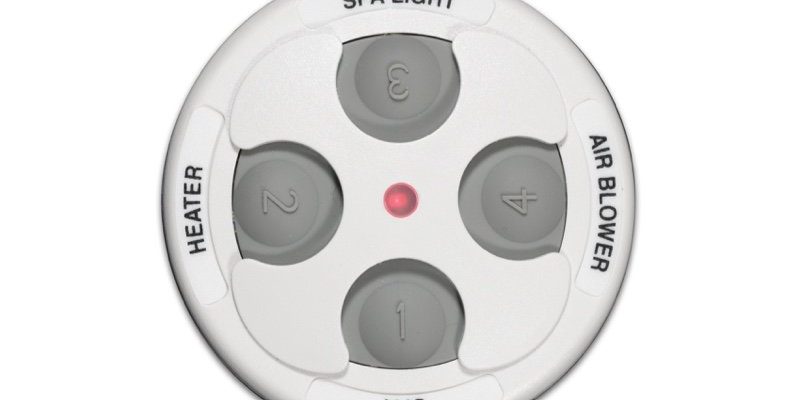
Before you go pushing random buttons or calling in a pool tech, let me break it down. Jandy makes several types of remotes, from simple wall panels to handheld wireless models, all made to work with Jandy AquaLink pool and spa systems. Whether you’re dealing with an All Button, OneTouch, or a slick, water-resistant handheld, the way the lights behave tells you what mode you’re in, what features are running—and when something might need your attention. It’s a bit like your car’s dashboard: ignore a blinking red light for too long, and you could be in for a headache.
Honestly, most owners just want to know: Are the lights normal, or is something wrong? Let’s decode what’s happening—so you can get back to relaxing in that perfect spa swirl, not wrangling a stubborn remote.
The Different Types of Jandy Remotes and Their Light Indicators
First things first: not all Jandy remotes are created equal. You might have a slick handheld AquaLink RS PDA, a wall-mounted All Button, or even a wireless OneTouch model. While the layouts can look different, most work in a similar way—using a series of lights to show which function is active, when things are syncing, and if there’s a problem.
On a typical Jandy remote, you’ll see a cluster of labeled buttons (like “Spa,” “Pool,” or “Heater”) and a set of tiny lights next to each one. These lights aren’t just for show—they’re your remote’s way of talking to you. When you press a button, the light next to it usually confirms your choice by lighting up. If you see a blinking or flashing light, that usually means the remote is sending a signal to the main control panel, or it’s waiting to confirm that action.
- Solid light: Feature is ON and the connection is good.
- Blinking/Flashing light: The remote is communicating, syncing, or waiting for the main system to confirm.
- No light when expected: The feature might be off, or there’s an issue with the remote, its battery, or its sync with the system.
You might be wondering: Is there a universal code across all Jandy remotes? Not quite. But most follow this basic pattern, with special signals for things like battery warnings or pairing status.
What a Solid Light Means on a Jandy Remote
Let’s start simple. If you press the “Pool” button and the light next to it glows steady and bright, that’s your green light—literally. It means that particular function (pool pump, heater, jets, whatever you’ve set) is active. The system and remote are talking to each other just fine.
Here’s the thing: on some models, more than one light can be on at a time, especially if you have multiple features running. For example, you may have the “Spa” and “Heater” lights on together. That’s not a glitch; it’s just showing you that those features are both engaged. It’s helpful for double-checking that your settings match what you wanted, especially if you’re new to pool automation.
Sometimes, the solid light is also your hint that the remote is fully paired and everything’s synced up. If you ever notice that the lights aren’t coming on at all—even when you know the system’s running—it could be a clue that the remote has lost sync, needs to be reset, or the battery’s gone flat. Solid lights are good news: they’re the remote’s way of smiling back at you.
If the Light Blinks or Flashes: What’s Going On?
A blinking or flashing light can be confusing if you’re not expecting it. But it’s actually a built-in part of how Jandy remotes communicate. You’ll usually see a light flash for a few seconds right after you press a button—this means the remote is sending your request to the main system and waiting for a confirmation.
Think of it like sending a text. Until the message goes through, you see that little spinning wheel. If the remote’s light keeps blinking longer than normal—say, 10 seconds or more—it could be a sign something’s off. Maybe the remote has lost its code pairing with the panel, the signal is weak, or there’s an issue with interference (especially true on wireless models). In rare cases, constant blinking could mean you need to reset or re-pair the remote.
Pro tip: Consistent blinking after every button press is normal. But if you see a light that just keeps flashing with no response, it’s time to do a quick troubleshooting run-through.
When No Lights Appear: Is the Remote Dead or Just Sleeping?
Picture this: You grab your Jandy remote, press every button in a little panic dance, and… nothing. No lights, no action, no pool party. This isn’t always a disaster, but it does mean your remote’s trying to tell you something.
The usual suspects here are pretty simple:
- Dead battery: Especially common with handheld units. Try popping in a fresh set—the remote should wake right up if that’s the issue.
- Out of range or signal loss: If you’re too far from the main panel or something’s blocking the signal (walls, metal equipment, etc.), the remote might not even flicker.
- Lost sync or pairing: Sometimes the remote and main system lose their “handshake.” A quick re-pair (check your manual for the code or button combo) usually fixes this.
If you still get no lights after checking all of these, the issue might be deeper—a stuck button, damaged remote, or a problem in the system’s control board. But nine times out of ten, a battery swap or quick reset does the trick.
Decoding Special Lights: Pairing, Sync, and Battery Warnings
You might notice your Jandy remote has extra lights or odd flashes during certain steps. These usually show up when you’re pairing the remote, syncing after a reset, or when the battery’s running low.
- Pairing/Sync lights: During initial setup, you’ll often see a specific sequence (such as a rapid flashing pattern) to show the remote is searching for the pool system. When pairing or sync is complete, the lights usually return to normal—no more wild blinking.
- Battery warning: Some models display a red light or a specific flash combo to say “Hey, I’m running out of juice!” Don’t ignore this—replace the batteries soon, or you might be locked out of your spa controls right when you need them most.
- Error codes: Rarely, you might get a pattern of flashes (like three quick blinks) to signal a system or code error. Check your model’s manual, but often a reset or re-pair will clear this up.
Here’s the thing: these special signals are your remote’s way of being proactive. They’re designed to help you catch problems before you’re stuck without controls on a pool party weekend.
Lights vs. Display Screens: How Jandy Remotes Compare
Not all Jandy remotes rely solely on lights—some higher-end models and wall controllers feature a digital display alongside indicator lights. The display screens can show more detailed info, like pool temperature, pump speed, or even full error messages. But even these advanced remotes don’t ditch lights altogether; they use them as instant status checks.
So which is easier to use? If you love simple, at-a-glance feedback, the classic light indicators are hard to beat. You don’t have to scroll through menus or decipher codes—just match the lights to the labeled functions. However, if you’re into data and want to dig into your settings, a remote with both lights and a display gives you the best of both worlds.
Some folks ask about universal remotes or generic pool controllers. While they exist, they’re rarely as seamless with Jandy AquaLink systems—and their indicator lights may not match Jandy’s “language.” Sticking with the brand’s own controller and learning its signals may save you some serious frustration.
Troubleshooting Common Light Patterns on Jandy Remotes
You might be wondering, “What do I do if the lights aren’t behaving as usual?” Here’s a quick troubleshooting flow for some of the most common scenarios:
- Lights won’t turn on: Try new batteries. If still dead, check for corrosion on contacts or reset the remote.
- Lights blink but nothing happens: Move closer to the main pool panel to check for range issues. If that fails, reset or re-pair the remote with the system (usually involves holding specific buttons—check your manual for the code).
- Unexpected flash patterns or error codes: Look for consistent patterns; three or four blinks may mean a code error or lost pairing. Resetting the main panel and remote usually clears these up.
- Lights turn off randomly: Weak or dying batteries are the most common culprit. Sometimes, auto-sleep features will also dim the lights to save power (especially on wireless models).
Pro tip: If all else fails, power cycle both the remote and the main pool system. Sometimes, they just need a fresh start.
If you ever feel totally stuck, Jandy support lines and pool techs have seen every signal under the sun. Don’t be shy about reaching out—it could save your Saturday.
Why Understanding Your Jandy Remote’s Lights Actually Matters
At first, pool remotes seem like a set-and-forget deal. But knowing what those lights mean can make a big difference. You’ll spot problems faster, avoid bigger system issues, and keep your backyard oasis running smoothly.
For example, catching a low-battery light early means you’re not scrambling in the dark, while knowing what a flashing sync light means can prevent endless button mashing. It’s all about keeping that line of communication open between you and your pool system.
Honestly, learning these little light codes is like getting to know a friend’s quirks. Once you figure out what makes them tick, the whole pool experience just gets easier—and a lot less stressful.
Final Thoughts: Keep Calm and Watch the Lights
Decoding the lights on your Jandy pool or spa remote isn’t rocket science, but it can feel like a puzzle at first. The more you use your remote, the more you’ll recognize its “moods”—a blinking here, a steady glow there, and what each pattern means for your pool fun. Pay attention to what’s normal for your setup, and trust those little indicators—they’re doing a lot of talking for such a small device.
If you ever get confused, just remember: lights are there to help, not hinder. With a bit of practice, you’ll go from head-scratching owner to confident master of your backyard domain. So next time those lights blink, flash, or glow, you’ll know exactly what they’re saying—and you can get back to what matters: enjoying the pool, not wrestling the remote.
